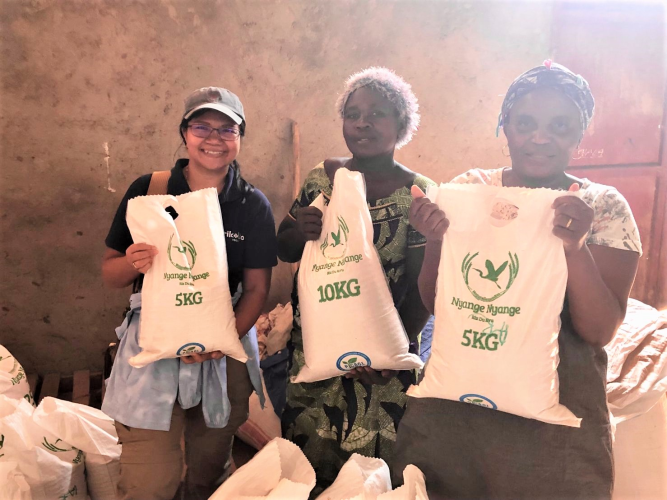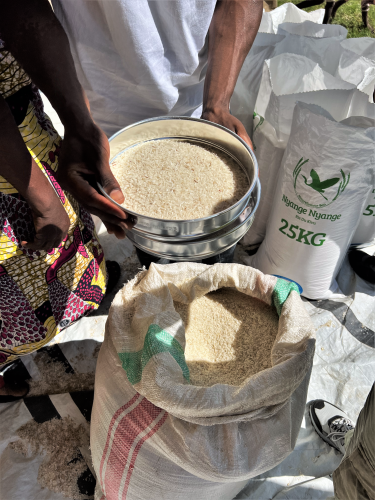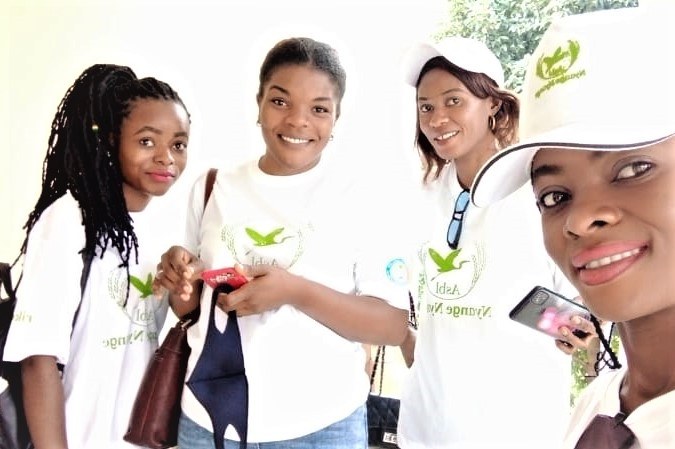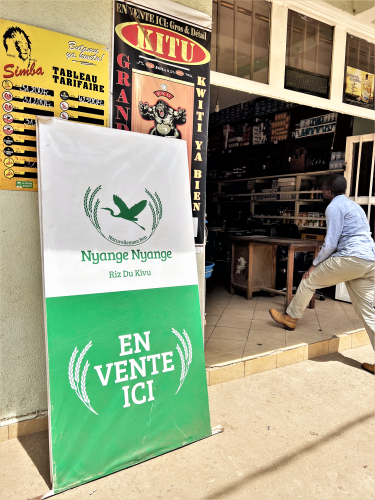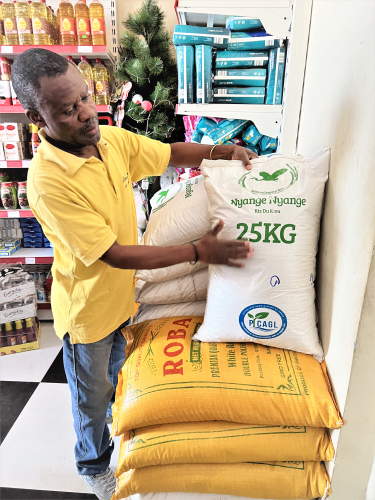Ivan Godfroid has dedicated the last 13 years of his career working for Rikolto to strengthen agricultural value chains in the beating heart of Africa: the Democratic Republic of Congo. In this interview, we will trace the development of the rice value chain in the DRC through his anecdotes, experiences and thoughts about the future.
A walk through the past and the future of Congolese rice: an interview with Ivan Godfroid
A walk through the past and the future of Congolese rice: an interview with Ivan Godfroid

How did your journey in the DRC start? What were your first impressions and what are your biggest takeaways?
I’ve been working in Africa since the 1980s, but it was only in 2010 that I moved to the eastern DRC. The life experiences of Congolese people were unlike anything I had encountered before. Driven by a desire for socio-economic self-management and determination after decades of neglect by central government and relying on a deep understanding of their local context, several grassroot organisations were emerging. This dynamic inspired and influenced our approach: wasn’t it possible to develop a strategy from the bottom up, together with farmers’ organisations as key catalysts for change?
From 2014 onwards, we co-created farmers’ cooperatives and guided them to pool resources, process and commercialise products collectively and deliver agricultural services to their members. In fact, to reach financial independence, cooperatives need to capture the added value generated by activities such as the transformation and commercialisation of high-quality products and transfer it to their members in the form of rural investments and services. At first, traders in the region were sceptical and concerned by the emergence of potential new competitors. However, quality conquers consumers, rewards producers, increases the market and creates new business opportunities for all actors in the value chains. A new awareness gradually emerged in the organisation: to have a greater impact, we needed to apply a food system approach for the benefit of farmers and consumers alike. If you want to know more about it, I invite you to read the article written by my former colleague, Charlotte Flechet.

Rice is the oldest commodity Rikolto works with in the DRC. Can you briefly describe the evolution you have witnessed in the value chain over the years?
I still remember the first time I came down to the Ruzizi Plain in the province of South Kivu. When we asked them about their challenges, every rice producer replied: “We don't have a market for our rice”. I was incredulous. Already at that time, the population of the city of Bukavu, 45 km away from the fields, was estimated at almost 1 million. Did its citizens not eat rice? The market analysis we conducted told us a different story: the market was flooded by rice imported from Southeast Asia. Local producers couldn’t compete with the low prices. Moreover, despite Asian rice being old, dry and tasteless, at least it wasn’t a tooth-breaker.

The context was challenging: a fragmented landscape of many small cooperatives (in name only), too small to be viable and stifled by market competition. We needed to foster their spirit of collaboration and convince them to join efforts to reduce production costs, improve rice quality and win over Bukavu’s consumers. To facilitate this change of mindset, we launched a call for co-investments – for the first time in the region. Two farmers’ organisations responded positively and equipped themselves with two quality rice hullers. An encouraging first step through which we won the trust of the farmers, who then later inspired the World Bank’s decision to select Rikolto as one of the implementers of the PICAGL project.
The PICAGL (Great Lakes Integrated Agriculture Development Project) is an ambitious initiative financed by the Congolese government through a loan from the World Bank, to create inclusive business opportunities in the agricultural sector of the South Kivu and Tanganyika provinces. What did you learn from its implementation, and what did you achieve?
PICAGL presented an incredible opportunity for scaling up our activities and validating our approach. We invested a great deal of hope in the project, but things don’t always go as planned. The completion of administrative procedures, alongside the constraints of the COVID-19 pandemic, hampered the implementation of project activities, which eventually started in 2019 instead of 2016. The failure of UNOPS, the infrastructure provider, to establish new rice perimeters for farmers was a great delusion. Our insistence on including an agricultural credit component to encourage large-scale adoption of improved rice-growing techniques was ignored. And, last but not least, the new machinery for testing our mechanisation approach is arriving only now, after years of delay. Despite these big challenges, we reached encouraging results, thus proving that we are going in the right direction:
- As a result of several meetings conducted between all actors in the value chains over more than one year, the quality assurance label Nyange Nyange has seen the light. Through an inclusive and participatory process, we developed a business model entailing a non-profit organisation certifying the rice produced by the cooperatives and ensuring quality for consumers. This 100% local Congolese rice won over Bukavu’s consumers, who were surprised by its freshness and delicious taste. Rice co-ops and distributors are now working hard together to ensure that their business model is able to provide increasing volumes of labelled rice to urban consumers throughout the year.
- To address UNOPS’s shortcomings, Rikolto is now implementing a less costly community-based Smart Valley approach. The agricultural perimeters are built by farmers themselves, within one growing season and with less investment than the elaborate water control infrastructures of conventional approaches. The experiences conducted in South Kivu and Tanganyika will be an incentive to adapt the approach in other provinces.
- We have also brought innovation to the fields through the farmers’ fields schools, a methodology developed by FAO which had never been used in the region. Farmers carry out experiments in their own field, comparing traditional practices with the ones proposed by Rikolto (Integrated Soil Fertility Management – ISFM – and System of Rice Intensification – SRI). Although higher investments in inputs are required at the beginning of the season, production costs are reduced, and yields have risen from 2 tons/ha to 5 tons/ha on average.
Food security in the DRC affects 26% of the population. According to the IPC 2022 report, “the DRC has the largest number of people suffering from food insecurity in the world.” What role does the rice value chain play in the fight against food insecurity?
Rice consumption has evolved considerably. 50 years ago, rice was hardly ever consumed except during festive occasions. Today, rice is the second-most produced cereal at national level and its consumption doesn’t stop rising. The population of cities such as Bukavu, Goma or Butembo is rapidly growing, with up to a 10% increase per year. Unfortunately, the people rely on fragile food systems due to the following interrelated macro-level issues:
- In rice-exporting countries, cities are expanding, reducing the hectares of cultivable land.
- Only 6-9% of the world’s rice production is dedicated to export, meaning that a reduction of 1 or 2 percentage points due to production shortages and increased domestic demand would have a massive impact on rice availability in importing countries.
- Congolese local markets are strongly orientated towards foreign markets, and local production can’t meet the demand.
- Climate change is strongly affecting farmers. The alternation of increasingly frequent floods and droughts is detrimental to their harvests.

Stronger actions need to be undertaken to strengthen local food systems and develop short value chains in the fight against food insecurity. A growing urban market is a big opportunity to increase farmers’ living income while ensuring access for a large number of consumers to sustainable, affordable and nutritious rice. The opportunity needs to be seized.
In your opinion, what is the biggest added value of Rikolto?
Rikolto is strongly committed to the dynamic it creates. The duration of our support is not determined by the duration of the donor funding: we build long-lasting relationships between and among the actors we collaborate with. For instance, the Bralima brewery has been sourcing its paddy from our partner farmers’ organisations locally since 2010. Their business relationship has resulted in greater access to seasonal credits and better incomes for farmers. However, Bralima’s volume requirement is limited to 3,000 tons and the rice is exclusively used to produce beer. To ensure the sustainability of our interventions and provide consumers with nutritious and affordable food, we've broadened our reach, acting on several fronts:
- We look for new markets and business opportunities in growing cities.
- We invest in mechanisation to increase the quality and production capacity of farmers’ cooperatives, reduce production costs per tonne as well as to create new job opportunities, primarily targeting young people.
- We foster the local production of organic fertilisers to face shortages caused by shocks like the Covid-19 pandemic or the war in Ukraine.
- We support the development of new kinds of food based on rice by-products. For instance, we have developed recipes with a local university, to turn broken rice into final added value products. Our vision is to accompany the birth of small and medium-sized enterprises led by women and young people and to create new off-farm job opportunities.
- To improve farmers’ resilience to climate change, we promote an optimal water management in combination with sustainable agricultural practices like ISFM. The Integrated Soil Fertility Management ensures a high level of organic matter in the soil for a better retention of fertilisers and humidity.
- We strive to develop a collaborative environment for cooperation and create incentives for all actors in the value chain.

For the first time this year, the national government has increased the budget allocated to agriculture. However, historically it has always remained below 2% although 70% of the employed population is engaged in agriculture (USAID). What is the power of influence of Rikolto and its partners over public institutions?
As Rikolto, we are a partner of AfricaRice, a pan-African Centre of Excellence for rice research which has supported several African governments in formulating a national strategy for rice development. The first Congolese national rice strategy was very ambitious, but its implementation never saw the light of day due to a lack of funding and national ownership. An updated version, to which Rikolto has also contributed, has now been finalised and the same errors should be avoided. Because of a lack of political willpower at national level, as well as agriculture being a decentralised policy component, we have been focusing on strengthening linkages with provincial public institutions. Despite political instabilities, there is room for moving an agenda for change forward.
We have established strategic relationships at provincial level where implementation units for the PICAGL project were set up. Moreover, Rikolto is one of the founding members of AgriCongo, an informal network of NGOs supporting federations of farmers’ organisations at provincial level to join their advocacy efforts through CONAPAC, the national confederation of farmers’ producers. For instance, CONAPAC recently succeeded in promoting the constitution of a fund for agricultural development through taxes on imported food products in two provinces. The challenge now will be to also ensure the full implementation of these provincial funds.

If you could launch an appeal to the actors of the rice chain, what would it be? And to whom would you address it?
The new national rice development strategy, as mentioned before, has finally been formulated. International and African experts have revised the document and given their precious input. In March 2023, several years after the beginning of the revision process, a national validation workshop has been organised, with CONAPAC representing the organised farmers’ movement. The next challenge will be to translate the strategy into a concrete action plan, make sure appropriate funding is available, including from DRC’s national budget, and take accountability for its implementation at provincial and local levels.
Can you suggest a book to our readers who may wish to explore this complex and fascinating country?
I have three recommendations:
- “Congo” by David Van Reybrouck. The book is also an anecdote: to welcome every new colleague in our DRC team, we present them with a copy of this magnificent account of Congolese history.
- The Belgian-Congolese magazine “Beauté Congo”. Along with a rightful decolonisation movement, it offers a common ground for new forms of collaboration between two countries sharing a long history. This magazine unveils the beauties of Congo through the contributions of Belgian and Congolese artists and writers.
- The newly-published book “Congo, peuples et forêts”, written by Alain Huart. His lifetime experience as an agronomist in Congo has enabled him to make this an impressively well-documented account of challenges and hopes for rural Congo.
Photo credits - hero picture: Isabel Corthier


